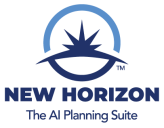
If you’re still using Excel or Google Sheets instead of supply chain planning (SCP) software, you might be wondering if there’s a better way.
After all, your supply chain and external challenges are only becoming more complex. And as your business grows, the problems with spreadsheets become more pronounced and obvious.
Spreadsheets are ubiquitous throughout supply chain planning. They’re familiar. People know how to use them, (mostly) trust them and like them for their flexibility.
While many supply chain professionals say they still rely on Excel spreadsheets for their supply chain planning, up to 74% of companies plan to invest in AI tools, according to Deloitte’s MHI Industry Report.
Why the interest in switching?
Because planning your supply chain using Excel also carries some significant risks.
Problems with Using Spreadsheets vs. Supply Chain Planning Software
While Excel is often the default solution because the software is essentially free, it’s not really suitable for supply chain planning.
And spreadsheets can be very expensive when it comes to lost savings opportunities and missed supply chain performance improvements.
In addition, spreadsheets
- Carry a higher risk of data errors. Manual data entry is error-prone, users may purposely or inadvertently change formulas, and it’s difficult if not impossible to keep data up-to-date and synchronized among users. Data errors can lead to significant and costly discrepancies if they’re not caught.
- Make it hard to manage large amounts of data. For example, you may have years of weekly or daily data multiplied by many items and many locations. Spreadsheets become increasingly cumbersome and slow to open and modify, especially when complex calculations are involved.
- Limit you to simple forecasting and supply planning techniques. The techniques accessible to users using Excel formulas are often suitable only for simple supply chain networks. You’re prevented from evaluating, using or choosing more sophisticated models which could optimize your results.
- Limit your ability to scale. As your organization grows, it becomes more difficult to rely on the same spreadsheet-based planning processes. Spreadsheets create version control issues, hinder collaboration among teams, introduce more errors, and slow everyone down.
- Make it a nightmare to combine, aggregate, and synchronize data. This is especially true when you have multiple users. It’s simply not possible for everyone to view, edit, and collaborate using the same underlying data when each planner is managing their own spreadsheet.
- Limit your analytic and reporting capabilities. Spreadsheets have limited reporting and analytic features, especially when compared to modern, AI software. Reports can take significant time to produce and may not provide the views most useful to different audiences.
- Slow your decision-making. Lack of real-time data could mean waiting for manual updates and reporting, which could take days to complete. This not only slows your reaction time, it could also prevent you from taking proactive steps to mitigate damage in the first place.
Eventually, your organization will realize the convenience of using spreadsheets is outweighed by greater risk, increased costs, decreased efficiency, and wasted time and frustration.
And those increased costs can add up.
The Hidden Costs of Spreadsheets to Your Organization
According to Chao-Ming Ying, CTO of New Horizon, many companies simply don’t realize how much using spreadsheets is costing them. Some of these hidden costs likely include:
- The time your team spends validating data each planning cycle
- Formula errors that could cost dearly in the supply chain
- The loss of tribal knowledge, which is difficult to pass along when your planning is siloed
- The risk that large files will easily crash or become tainted
- The struggles to collaborate in a team environment
- Difficulties in comparing current plans with previous versions
- The inability to keep an audit trail
Fortunately, enterprise SCP software avoids most of these risks and offers numerous advantages besides.
The Benefits of Using Enterprise Supply Chain Planning Software versus Excel
With an Enterprise Planning solution, you’ll get cleaner data that’s protected from manual errors and no chance that users will inadvertently change formulas or work processes.
You’ll easily be able to handle large amounts of data while keeping it all up-to-date and synced. The system will allow you to automatically aggregate, view, and report on data from multiple users.
You can apply more appropriate advanced forecasting and supply planning techniques as your organization’s supply chain complexity rises.
And your team will finally all be on the same page, with the ability to collaborate using the same underlying data.
Also, with an enterprise-class solution, you’ll be able to take advantage of deeper functionality and automation in just about every aspect of supply chain planning, including the use of AI and machine learning. You can incorporate
- Demand segmentation
- Constraint-based supply modeling
- Multi-echelon inventory optimization
- Workflow collaboration
- Alerts and exception management
- Audit trails
- Data archiving
- Scenario modeling
- Automated integration with supply chain execution systems
- Role-based security and data access
Best of all, if you choose the right software, your users will have an easier time making the switch.
So how do you ensure an easy upgrade that keeps your users excited about using the new tool?
Enter SCP Software with a Spreadsheet-Like Interface
Many of the problems behind user adoption of enterprise-grade software arise because of a steep learning curve.
But software built with an Excel- or Google Sheets-like interface eases the training burden, facilitates change management, and greatly lessens the common challenges around user adoption.
So if you’re looking for faster, easier user adoption and quicker time to value, plan your transition carefully. Look for software that ensures
- Easier training
- Easier change management
- Higher user adoption
Making the Transition from Spreadsheets to Enterprise Software
Implementing SCP software at a company using spreadsheets will follow a similar process as for a company already using SCP software, with a few differences:
Spreadsheet users are less likely than SCP software users to have clean, structured historical data that can be ported over to the new system, so there may be a bigger data cleansing effort.
Spreadsheet users are less likely to have well-defined SCP processes in place. This has pros and cons. On the one hand, these organizations may be more open to designing an optimal process, as they’re not wedded to an old one. On the other hand, it may take longer to define the new process because they are less sophisticated from an SCP maturity point of view.
But no matter where you’re starting, getting started with New Horizon generally includes:
- An initial live demo using your data.
- A Proof of Concept (POC) project designed to demonstrate the potential value to your organization.
- A performance demo that compares opening a worksheet in New Horizon software versus one in Excel.
- A demo of the audit trail capability and its benefits.
- Setup of automatic data transfers.
At each step of the way, we collaborate with you to provide the fastest time to value, lowest TCO, and lowest risk.
Can you afford not to make the switch from spreadsheets?
AI-powered supply chain planning solutions are 67% more effective than non-AI solutions thanks to lower risk and costs.
With an enterprise application like New Horizon, you can easily overcome the challenges inherent in spreadsheets. Imagine everyone in your organization sharing the same data, even while multiple users are viewing and editing it along different product, location, and time aggregations (e.g., item vs. product family, DC vs. customer, etc.)
While the move from Excel or Google Sheets spreadsheets to enterprise planning software can seem daunting, you can make the transition easier if you know what to expect and plan for it in advance.
The best enterprise planning solutions understand the appeal of familiar spreadsheets, while overcoming the inherent risks and drawbacks of running critical planning systems using them.
And with New Horizon, you can go live in as quickly as one month.
To Learn More
Ready to make the switch? Talk to one of our experts.


